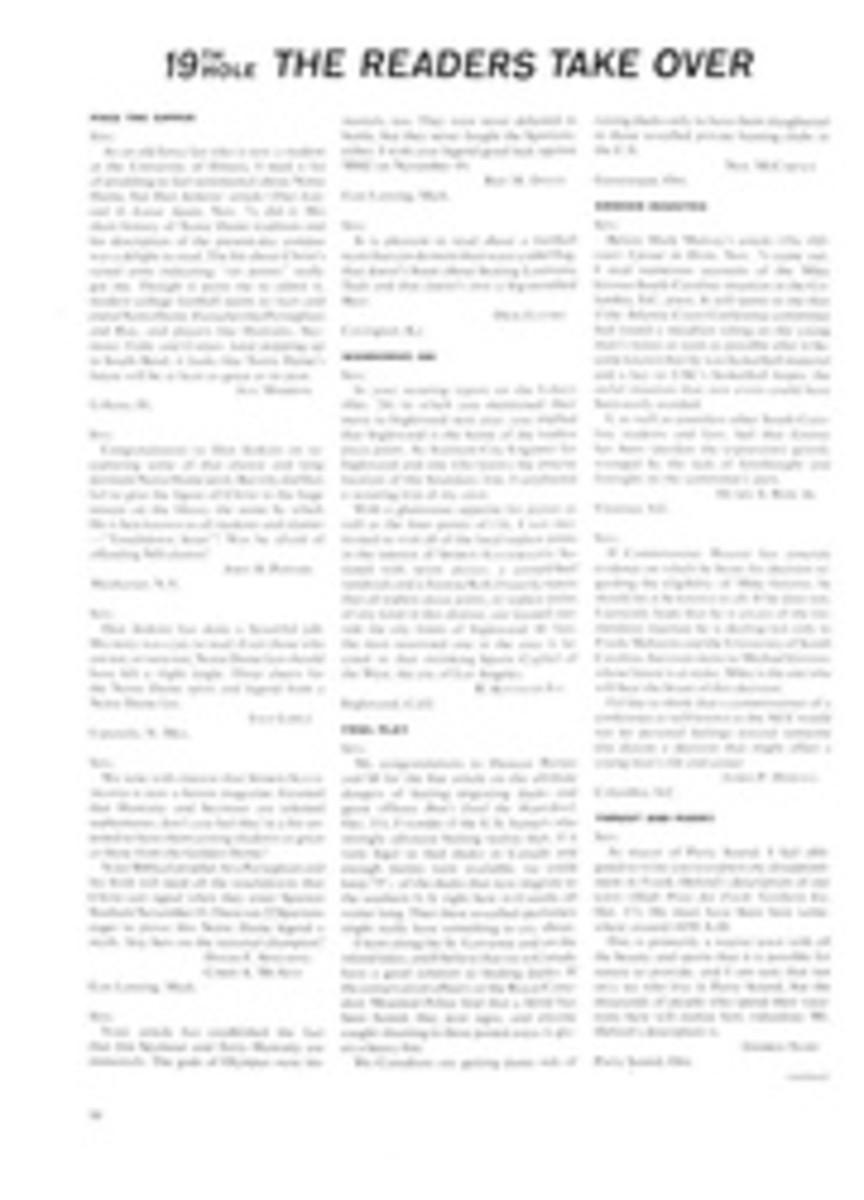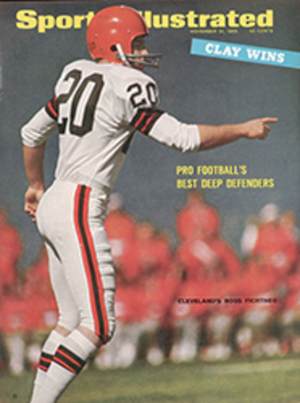
A 'sugoi' try nearly won a trophy for Sugi
For three and a half days last week there rose along the steep hillsides of Tokyo Yomiuri Country Club the soothing sound that is the Japanese sigh of admiration—umai-na, meaning wonderful. It was caused by the sight of better golf than the Japanese had ever seen before, much of it being played by Arnold Palmer and Jack Nicklaus, who shot a record-breaking 28-under-par team total of 548 to return the Canada Cup, the most esteemed prize in international golf, to the U.S.
The Palmer-Nicklaus performance, a study in golfing teamwork, made a rout of the matches. The U.S. pair went into the last day with a seven-stroke lead and never let anyone threaten it, eventually finishing five shots ahead of South Africa, whose Gary Player and Harold Henning had won the cup a year ago in Spain. To seethe U.S. gods of the game at their best was indeed umai-na.
But halfway through the final round on Sunday afternoon the weather at Yomiuri changed from Japanese magnificent to Anywhere awful, and at about the same time the sound of the gallery began to take on a different note, one of personal excitement. The word now being heard in the crowd was sugoi—amazing. The team matches were, to all purposes, over, but what remained at stake was the individual title, called the International Trophy, and the fight for it had unexpectedly become a complex struggle that included—sugoi as it seemed—Japan's own Hideyo Sugimoto.
By Japanese standards, Sugimoto is a big man and a big hitter. He is 5 feet 11 and has a chunky build that is indicative of his strength. He is also the home pro at Yomiuri—which is a considerable source of strength in itself when you happen to be playing there. His scores for the first three days on the 6,962-yard par-72 course were 66-69-68. It was good golf, but not good enough to keep up with Canada's George Knudson. A lean, cool customer from Toronto, Knudson broke the course record with a 64 on Thursday, and by Sunday morning was at 198, four strokes ahead of Palmer, five ahead of Sugimoto and six up on Nicklaus.
The final day's pairings found Canada matched with the U.S., which put Knudson head to head against Palmer and Nicklaus, and Nicklaus chipped away at Knudson. By the end of the 14th hole he and the Canadian were tied, with Palmer two strokes back. Then came the short, 194-yard 15th hole. Knudson got his par 3, but in a rare lapse Nicklaus bounced his tee shot off the edge of the green into the deep rough. His chip back went 20 feet past the pin, and he three-putted for his only double bogey of the tournament. When Palmer bogeyed the hole, both the Americans had lost their big chance at the individual honors.
But Sugimoto, playing behind this foursome and seemingly untroubled by the downpour that started on the back nine, kept plugging along in his careful and calculating style. Birdie followed birdie. By the time he got to the 18th tee he was 16 under par and tied with Knudson, who was in the clubhouse with a 74 and a 272 total. A par on 18 would have won it for Sugimoto and sent the drenched crowd into delirium, but his tee shot on this 224-yard par-3 caught a bunker. He exploded long and took his two putts to tie Knudson, who at that moment was changing into his street clothes in the locker room.
For several tense minutes in the rain, officials discussed the possibility of declaring joint winners. Asked if he wanted to have a sudden-death playoff, a cold and wet Sugimoto replied: "Yes, unless Knudson objects." The easygoing Knudson, whom the Japanese press called "Dandy Boy," said O.K., and he and Sugimoto headed for the first tee.
Knudson, smiling and puffing away on a cigarette, retained the jaunty air that had enchanted the Japanese all week, but Sugimoto was serious and somber as both parred the first hole. On the second extra hole, a par-3, Sugimoto hit within 15 feet of the cup but missed his putt, and then Knudson, only 12 feet away, knocked in the winning birdie.
In spite of the loss, the gallery was hardly disconcerted. The Japanese turned out in unexpected numbers (and uninvited numbers, too; the spectator limit was to have been 5,000 because the course has little gallery room, but about 12,000 a day paid their $5.50 and got in) and had the pleasure of seeing one of their golfers do extremely well, bringing back memories of the Japanese Canada Cup victory in 1957.
Nor was there much to dismay any of the 70 players from other nations. Now 14 years old, the Canada Cup matches had again demonstrated what an international sport golf is, not only by the fine performances of famous golfers from many countries, but by some lesser achievements as well.
There were the Czechs, for example, who finished last a year ago. They did the same again, but this time they improved their score by 75 strokes. And there were the Koreans, competing for the first time in seven years, who beat 12 other countries. Finally, the matches proved, once and for all, that Jack Nicklaus, who finished tied for third with a 273, is every bit as good a golfer as the Republic of China's Lu Liang-huan, who also had a 273.
PHOTO
THE WRITING MAY BE CONFUSING, BUT NUMERALS AND SMILE SHOW GEORGE IS AHEAD

